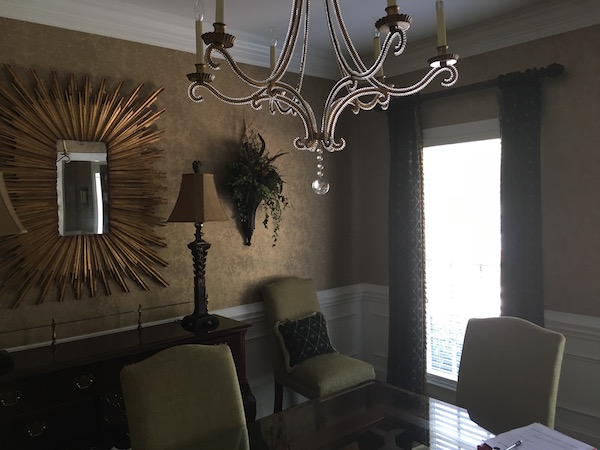
Few home improvement projects are more time-consuming, messy or frustrating than stripping wallpaper. Stripping wallpaper is a process that requires the use of special tools, caustic chemical materials and most of all, a lot of patience. It can be done by a do-it-yourselfer with the right amount of time and proper temperament, but it isn’t an easy process to undertake.
Wallpaper Removal Techniques 101
When it comes to stripping wallpaper, there are only a few proven techniques to get the job the done right. Here are the most effective wallpaper removal techniques and the tools and time required to get it done.
Perforating the Wallpaper
The key to wallpaper removal is not damaging the drywall or plaster underneath. If you’re undertaking a wallpaper stripping project, your best bet is to invest in a special tool that scores the wallpaper prior to stripping. These handheld tools poke numerous holes in the wallpaper (but not the drywall) that allow for chemicals to be applied that break down the adhesive. Older adhesives could easily be removed by applying moisture to them, thus reducing their effectiveness. Newer wallpaper adhesive, however, is designed to resists moisture and thus requires a chemical application to get it to release its hold. Once you’ve perforated the wallpaper and applied the chemical, you should be able to easily remove it.
Steam Stripping Wallpaper
If you’ve got older wallpaper, applying a steam treatment to the surface might be all you need to do to remove the paper. Older adhesives will give way when moisture is applied, so a rented steam application tool should do the trick. The only problem you might run into is if newer wallpaper adhesives were used in the application. Then you’ll need to take more substantial measures in order to remove them without causing damage to the sub wall.
Ready to start your wallpaper removal?
Find ProsPreserve the Sub Wall at All Costs
Whether you go the perforation route or use steaming, your primary concern should be the wall underneath. Removing a layer of wallpaper and applying paint or another wallpaper design is a relatively manageable task. Repairing a sub wall that has been significantly damaged by scraping or other harsh wallpaper removal techniques is a different project entirely. You’ll need to start by repairing any obviously damaged areas by applying a drywall compound to larger blemishes. Then you’ll need to follow that up by painting on a drywall shellac to prepare the surface for further wallpapering. As a rule, the best thing you can do is to take great care when it comes to stripping wallpaper in the first place, so you won’t have any sub wall problems to address.
Talk to a Professional
Wallpaper removal and application is a common do-it-yourself home improvement, but it is one of the most time-consuming and labor-intensive jobs you can undertake. Talk to an interior designer to get the best advice about how to tackle the process yourself, and don’t be shy about hiring the job out to a professional. A contractor experienced in wallpaper stripping can get the job done in less time, and with a fraction of the frustration that an average homeowner is sure to experience.
 Decorative Moldings: The Perfect Cover-up
Decorative Moldings: The Perfect Cover-up  The Basics of Ceramic Wall Tile Installation
The Basics of Ceramic Wall Tile Installation  Wallpaper Prep
Wallpaper Prep  Coffered Ceilings Add Value to Home
Coffered Ceilings Add Value to Home  Drywall Finishing: Don’t Ruin the Ending!
Drywall Finishing: Don’t Ruin the Ending! 

Are You Familiar With This Topic? Share Your Experience.